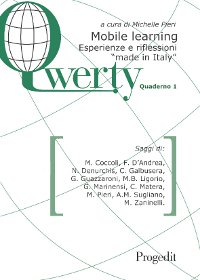Special issue
The lesson learned: what we have learned from the pandemic and how to innovate schools and universities in order to overcome it
Guest editors: Graziano Cecchinato (University of Padua) & Juan González-Martínez (Universitat de Girona)
The outbreak of the pandemic abruptly interrupted the usual educational activities at schools and universities last winter. The attempt to use digital technologies to specularly reproduce classroom activities on the Internet has shown all its limitations right from the start. As revealed by the past two decades experiences, the lack of redesign in teaching methods, that should anticipate the adoption of new technology, has undermined this emergency solution, as many other school digital innovation efforts.
The universities have also been attempting to get presence and distance to coexist by merely reproducing live streaming the in-presence lessons. Despite the functionality of web conferencing environments being consistently upgraded, the goal of creating a teaching method that is useful both for students in the classroom and those who are not, is still far from being a functional and real option. It is evident, for instance, that this has led the teacher to become even more isolated by staying behind the desk.
The root of the failure of these methods can be found in the idea of transferring practices and methodologies typical of schools and universities directly into digital, whereas research and educational practices have long supported the reverse path, bringing the languages and cognitive processes of the new media into the contexts of formal education.
As a result, today’s terms such as “Distance Learning” or “Dual Learning” evoke failures to be forgotten to return as soon as possible to “normality”. This hope, however, could turn out illusionary, considering that the adoption of technologies has also made it possible to glimpse the considerable benefits in economic, social, environmental, organisational and educational fields. These benefits have been highlighted by multiple bottom-up experiences that led to processes of true educational breakthrough. Therefore, it is reasonable to expect that, in a post-emergency time, it will be possible to multiply paths of real innovation capable of harmonizing schools and universities to the changing needs of society.
This call aims to collect and share contributions documenting research, experiments and experiences that pursue this direction and that can help to understand what we have learned in this field from the pandemic and how to go further.
All the manuscripts received will undergo the standard double-blind review process. Contributions in English will be accepted.
Instructions for submitting an article can be found at the following web address: https://www.ckbg.org/qwerty/index.php/qwerty/about/submissions
Authors are strictly required to follow the QWERTY Template
Important dates and submission process:
Deadline for first manuscripts submissions: March 30th, 2021
First decision from the review process: May 30th, 2021
Final copy from authors to guest editors: August 30th, 2021
Publication / accepted papers available online: from December 20th, 2021

